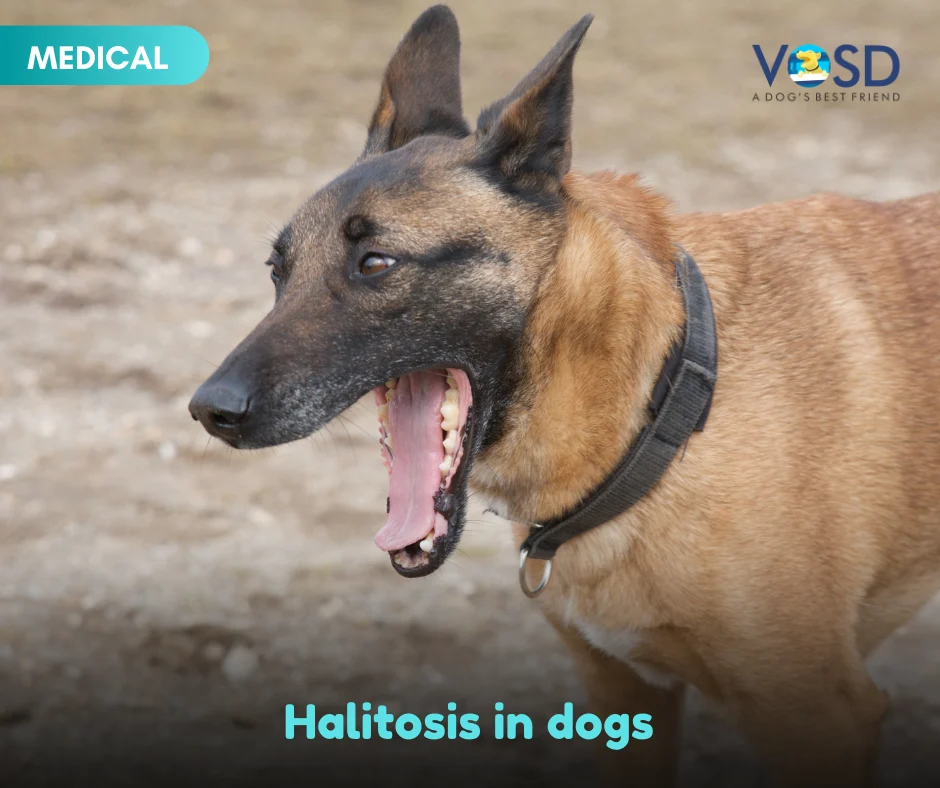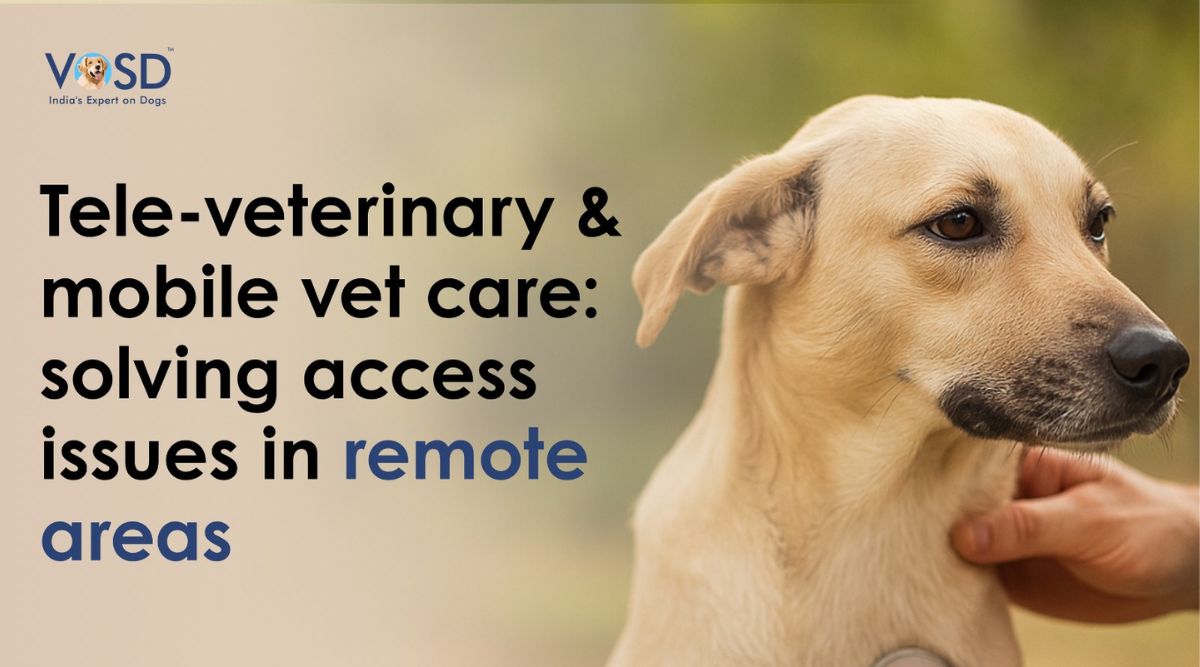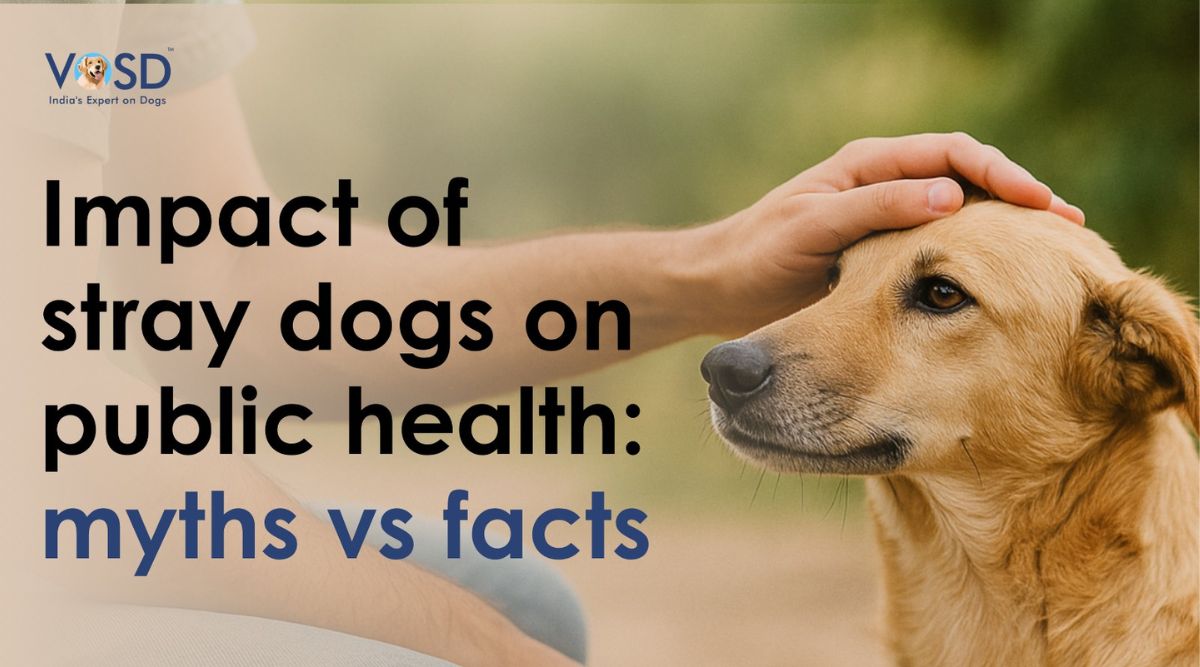Understand halitosis in dogs so you can take rapid steps to cure this disorder.
Introduction
Halitosis is when an offensive odour comes from your dog’s mouth. This is generally seen as bad breath and can be chronic. Gums that are unhealthy or carrying some form of disease are usually the reason for Halitosis. The ever-present bacteria in the mouth gets promoted to bad bacteria, aided by the plaque formation, leading to bad breath.
What are the causes of halitosis?
There are many causes for bad breath in dogs: Periodontal or Gum disease, Diabetes Mellitus, Rhinitis, Sinusitis, Gastrointestinal causes, Viral infections, Trauma or injury, Pharyngitis, cancer, etc.
Gum diseases come in two forms: Gingivitis and Peridontitis
Gingivitis: This is the initial stage of gum disease where the bacterial plaque causes the inflammation of the gums; the ligaments and the bone supporting your dog’s teeth are as yet unaffected. The gums do get swollen, and it may bleed when they come in contact with food or in an attempt to clean their teeth. Gingivitis appears in a very young dog, at around 2 years of age and if noticed immediately can also be treated.
Periodontal disease: This can be considered the 2nd stage of gum disease. This is also the result of bacterial plaque as in, a build up in the plaque or cavities. This type of gum infection goes beyond swollen gums and on to damaging the soft tissues and destroying the bone supporting your dog’s teeth. Poor dental hygiene, age, genes, and diet are some of the common causes of gum disease. Untreated gingivitis leads to periodontitis. This can sometimes appear only much later, after a few years in some cases.
In both cases, gingivitis and periodontitis, bad breath or halitosis will soon follow.
Dogs that have short noses, flat features like the Pug or Pekingese are more likely to suffer from periodontal diseases. This is mostly because their teeth are too close to each other. Generally speaking, small breeds are the ones that contract periodontal diseases easily.
Diabetes Mellitus: This is a metabolic disorder and is also known as sugar diabetes and can result in high blood sugar. In this case, your dog’s body doesn’t produce sufficient insulin that can convert the sugar into energy or the insulin that is produced is not doing its job properly.
Rhinitis: Respiratory problems come under this category. If your dog’s nose or nasal passages are inflamed, it could lead to bad breath.
Sinusitis: If your dog’s sinuses are inflamed, it is likely to be the cause of bad breath.
Gastrointestinal problems: The esophageal tube may be enlarged; thus, the passage leading to the stomach from the throat can emanate bad odour. Poor diet not only affects your dog’s health; but also causes bad breath. This includes a tendency in your dog to eat feces and naturally, there is bound to be an emission of bad odour. This is a behavioural concern and is also known as coprophagia.
Trauma: Apart from the above, an injury or trauma is also known to cause bad odour in your dog’s mouth.
Viral infections: Fungal infections are one of the likely causes for the body to to release bad odour through the mouth.
Pharyngitis: The throat or the pharynx of your dog may be inflamed or the tonsils may be inflamed. In both cases, it is natural for the emission of foul breath.
Cancer: Cancer and its associated treatment may lead to foul breath, too.
Symptoms of halitosis in dogs
Halitosis is in itself a symptom and enough reason to check with the vet. However, if unchecked, other symptoms may become apparent such as constant pawing of the mouth area or a resistance to eating, excessive drooling with or without traces of blood, etc.
Diagnosis of halitosis
Since the most common cause of Halitosis is periodontal disease, your vet will recommend x-rays of the mouth including the inside of the mouth, to start with. There will also have to be a thorough examination of the mouth to check for cavities and look for high concentrations of sulfide. This will help in identifying the cause of Halitosis and in confirming if there is only one reason for it. Some dogs may have multiple reasons and one or more parts of the body may need examination.
How do you prevent halitosis?
Gingivitis: Keep brushing your dog’s teeth and make sure there is no plaque build-up. Your dog may not be too happy with the brushing; but, it is imperative that this is a habit that is formed from the beginning.
Diet can play a large role in maintaining healthy gums. You can make sure that the diet and even the treats you give your dog contain ingredients that offer some kind of self-cleaning mechanism.
Periodontitis: Unlike Gingivitis, this can require more care and effort. In small breeds when the teeth are too close to each other, selective extractions can be performed. Maintaining oral hygiene and regular check ups to prevent the onset of periodontitis is critical.
Treatment
Make sure that you take your dog for professional cleaning regularly. This will include scaling and polishing under general anesthesia. A mere polishing of the crown will not suffice. However, gingivitis caused by internal disorders or anything other than plaque formation will require a more intense treatment plan including x-rays and other tests to identify the cause resulting in bad breath in your dog.
If the bad breath from your dog is caused by periodontitis, the treatment will have to be more aggressive. The root scaling and the planing will be intensive and will have to be followed up addressing the inflamed tissue. Apart from these, the vet would also be checking if any extractions are required. All things considered, any of these measures will ensure healthy teeth and remove chronic bad breath in your dog.
What else you can do to help
Above all, pay attention to your dog and any symptoms that occur be it physical or behavioural. Physical may be easier to spot as bad breath is unmistakable. Behavioural symptoms would include eating undesirable items or a lack of appetite and should be a trigger for you to check if your dog has bad breath that you may not have noticed.
Clean oral hygiene, clean environment, clean toys and treats are basic necessities and will get you only fresh and clean breath from your dog!
The information contained in VOSD Vet Advice™ is not intended nor implied to be a substitute for professional medical action which is provided by your vet. You assume full responsibility for how you choose to use this information. For any emergency situation related to a dog’s health, please visit the nearest veterinary clinic.








